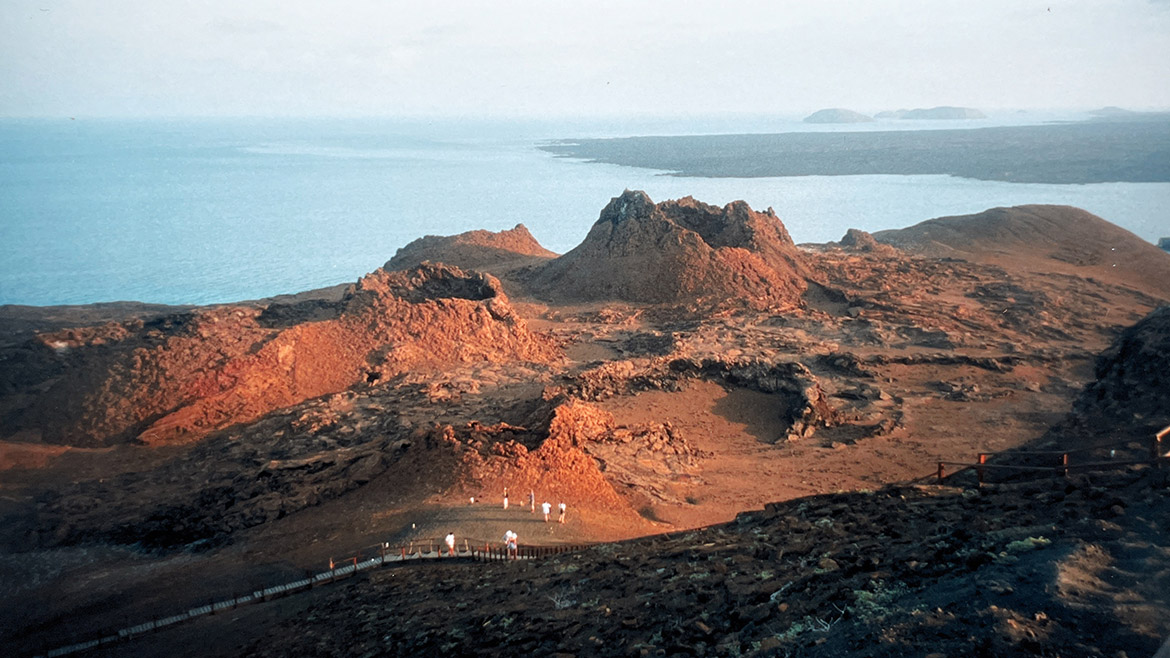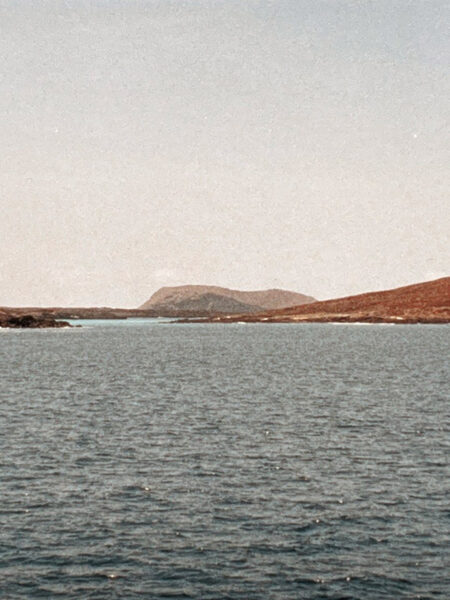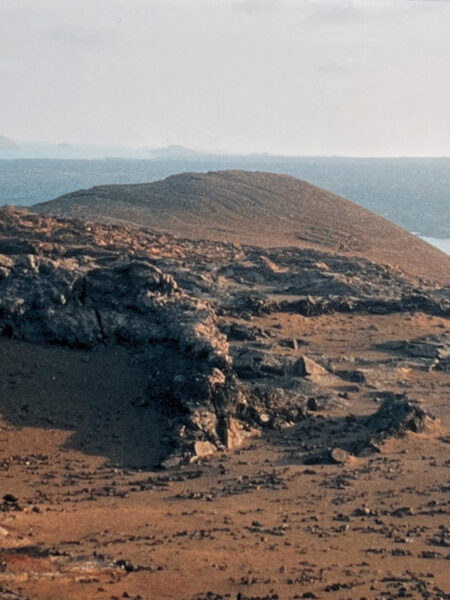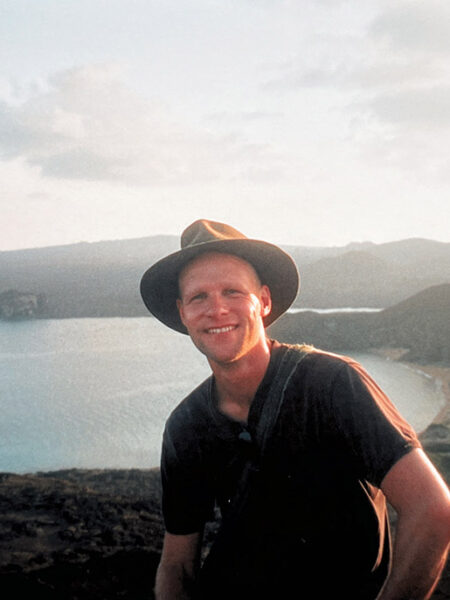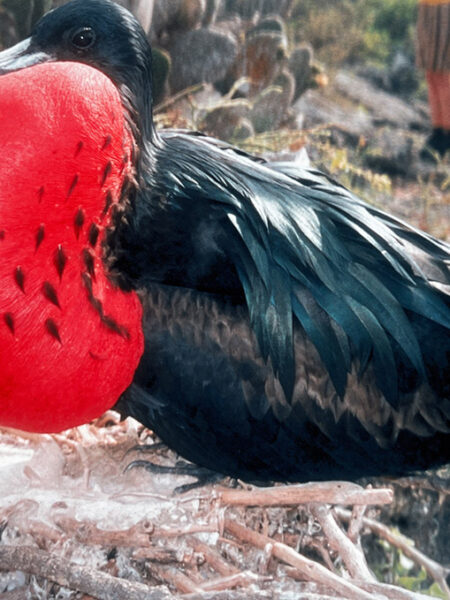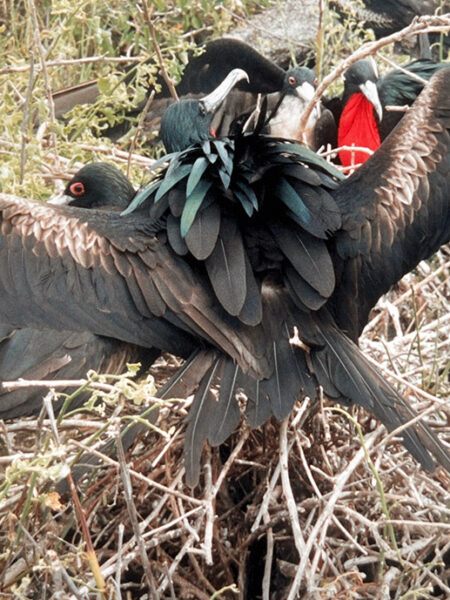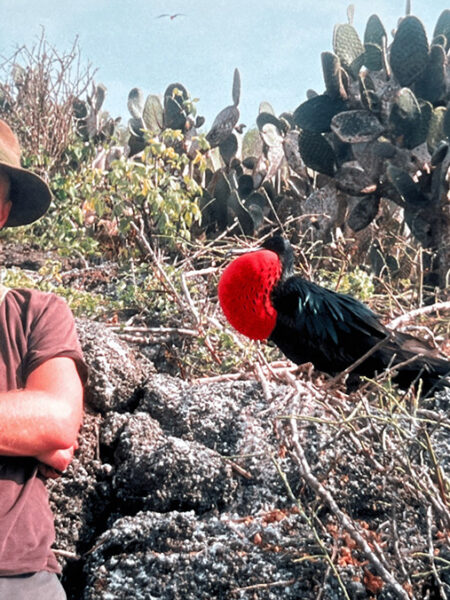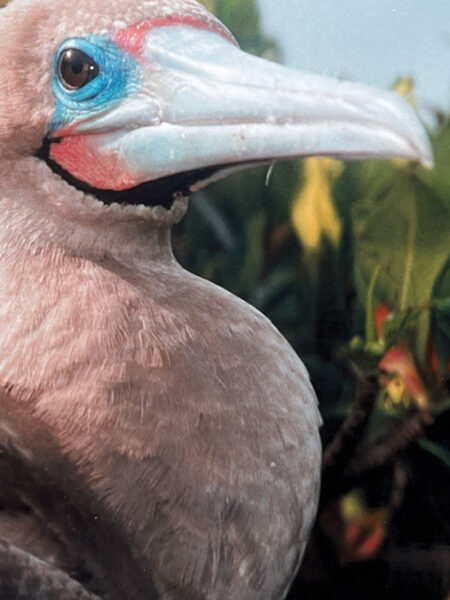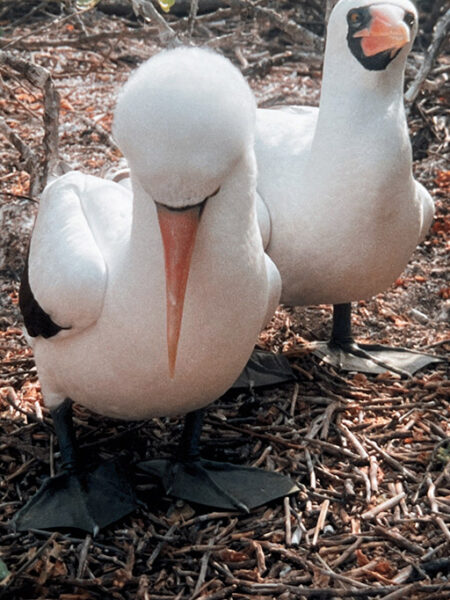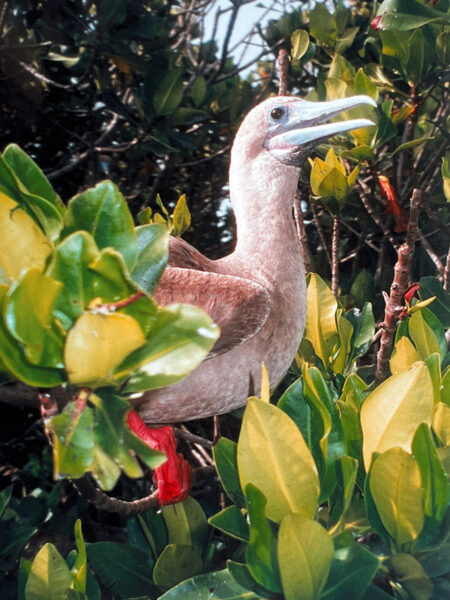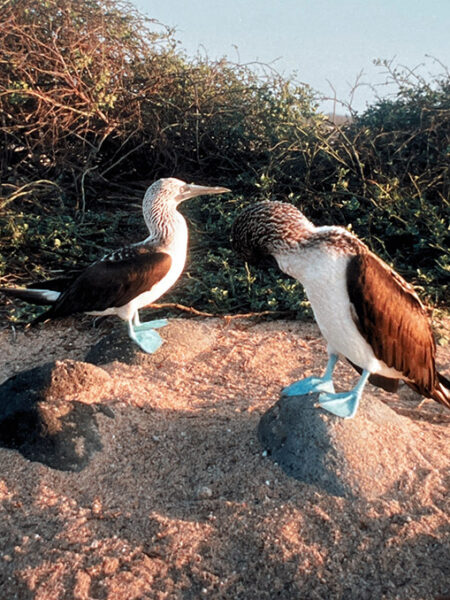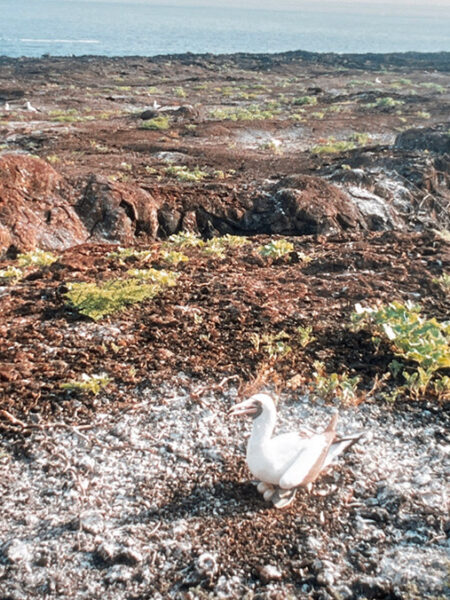Friday
Last night the boat started at midnight, so waking at 6am we were just arriving at Rabida island, the sun coming up over the horizon and dolphins playing at the boat’s prow.
After breakfast we motored up to Rabida’s red sandy beach (from iron spewed out of the volcanos that formed the islands), and went for a walk through the barren and dry landscape. After reading ‘The Beak of the Finch’ I can see natural selection in action – the lack of rain this year will mean, for example, that the finches with larger beaks, who can crack the larger seeds, will survive to pass their beaks on to the next generation.
Back at the shore we went for a long and fantastic snorkel around the headland, seeing a shark, big schools of fish, and swimming with very playful young sea lions.
Then the boat headed northwest past incredible prehistoric scenery – islands made of huge black lava flows, cones on the horizon, past the flat cone of Sombrero Chino and the eroded craters of Bainbridge Rocks. At one of these rocks, we got on the boat’s roof to look over the sea cliffs, the rim of the crater. Within was a lake dotted by flamingos, hidden from the sea. Finally we reached Bartoleme and moored off Pinnacle Rock, a leaning spaceship-on-end of a rock pointing at the sky. More snorkelling. We saw two ecuatorial penguins, and they even put on a show for us, mating while we watched!
After a rest we motored to shore, and found ourselves in a stark alien landscape of lava, ‘tough’ rock and basalt. An amazing vista of solidified lava, flowing patterns frozen in the rock, and slopes of cinder and sand. A wooden walkway led to the top of an old cone where there was a spectacular view across the surrounding islands, lava flows, Pinnacle Rock, the occasional splash of green, wide waters reflecting the afternoon sun. A bizarre and primitive view, like being present just after the birth of the earth.
Saturday
At 6am we were at the cliff-ringed harbour of Genovesa, having crossed north over the ecuator during the night. On the beach we began a walk surrounded by the most amazing variety of birdlife I’ve ever seen – swallow-tailed gulls and their chicks; red-footed and masked boobies, courting beautifully by picking up and passing little twigs to each other; and most spectacular of all, the frigate birds. Tens of male frigate birds with their bright red balloon-like throated sacks inflated sat on their nests waiting for females to fly overhead. When a female flew by they all spread their wings and cried out, looking up and showing off. The females flew by quite a few times, enjoying the reaction, before they finally settled on a mate!
We walked to a lava clifftop and sat on the edge, watching the frigate birds court, and the males steal twigs from each other in spectacular acrobatic mid-air manoeuovres. Our guide, who has been here for nine years, was very excited, saying it was the perfect time to visit this island.
After a break on the boat we motored to the east cliff side and went snorkelling, looking for hammerhead sharks. No luck, but we did swim with a huge manta ray, which loomed out of the blue deeps, about three metres across, with two remorhaz fish clinging to it like jet fighters on an aircraft carrier. An beautiful, graceful animal.
Lunch and a few lazy hours on deck. Then we motored to the other side of the harbour to Prince Phillip’s Steps, rough steps up the cliffside to the top of the cliffs. Walked across lava rock, past fissures, looking at many nesting masked boobies, frigate birds, a galapagos dove nesting in a tree with its tiny chicks. At a distance sat a short eared owl. Frigate birds and masked boobies cried out, the latter males making a noise like a cheap wooden whistle.
We all couldn’t believe it was our last night as we sat around the top deck drinking beers and swapping our email addresses. At dinner the crew had cooked us a cake to say goodbye.
Sunday
Up early, about 5.30pm, for a last shore trip, to North Seymour island. Mostly my favourite bird, the blue-footed booby, many of them courting, slowly lifting first one and then the other pool-blue webbed foot, and ‘sky-pointing’ by stretching their beaks to the sky and fanning out their wings. Also some sea lions, particularly one very cute and photogenic baby.
It soon got swelteringly hot, and we motored back to the boat, and seven of us who were catching the first day’s flight grabbed our bags, were dropped at another boat to be taken to shore and thence to the airport and back to Quito.
A couple more days in Quito, a few boring days in Orlando, Florida (though I did check out the Kennedy Space Centre and, at a distance, saw the space shuttle Endeavour on the pad ready for launch), and I’m now in London. My friends here are being wonderful; it’s cold in London but it’s good to be here again, despite missing family and friends from home.
What do I do now? Well, give it a go here for a while – see how work goes, then maybe later in the year do a bit of travelling in the area. Rest assured, if it involves travelling, it will end up in these pages …

